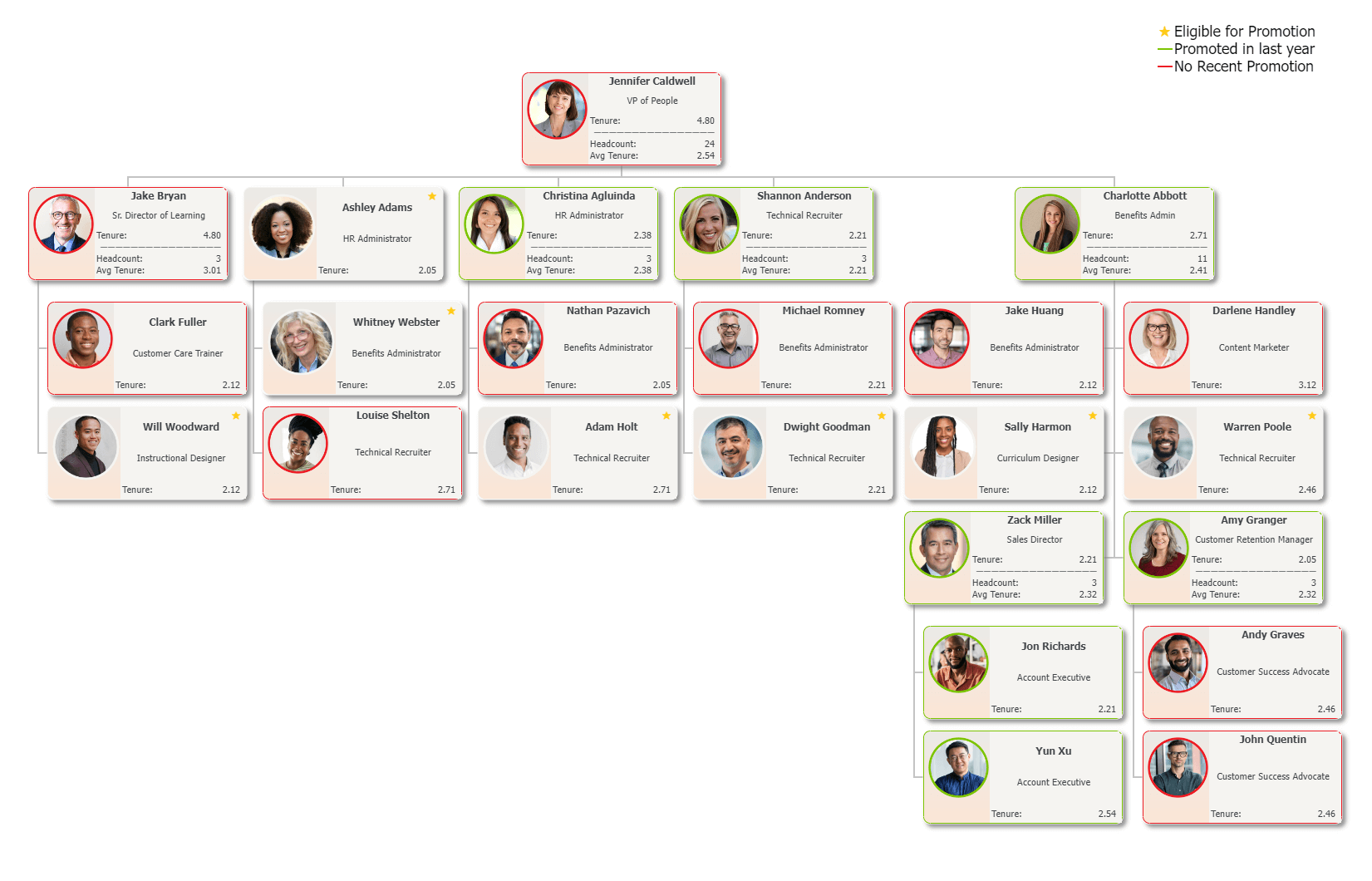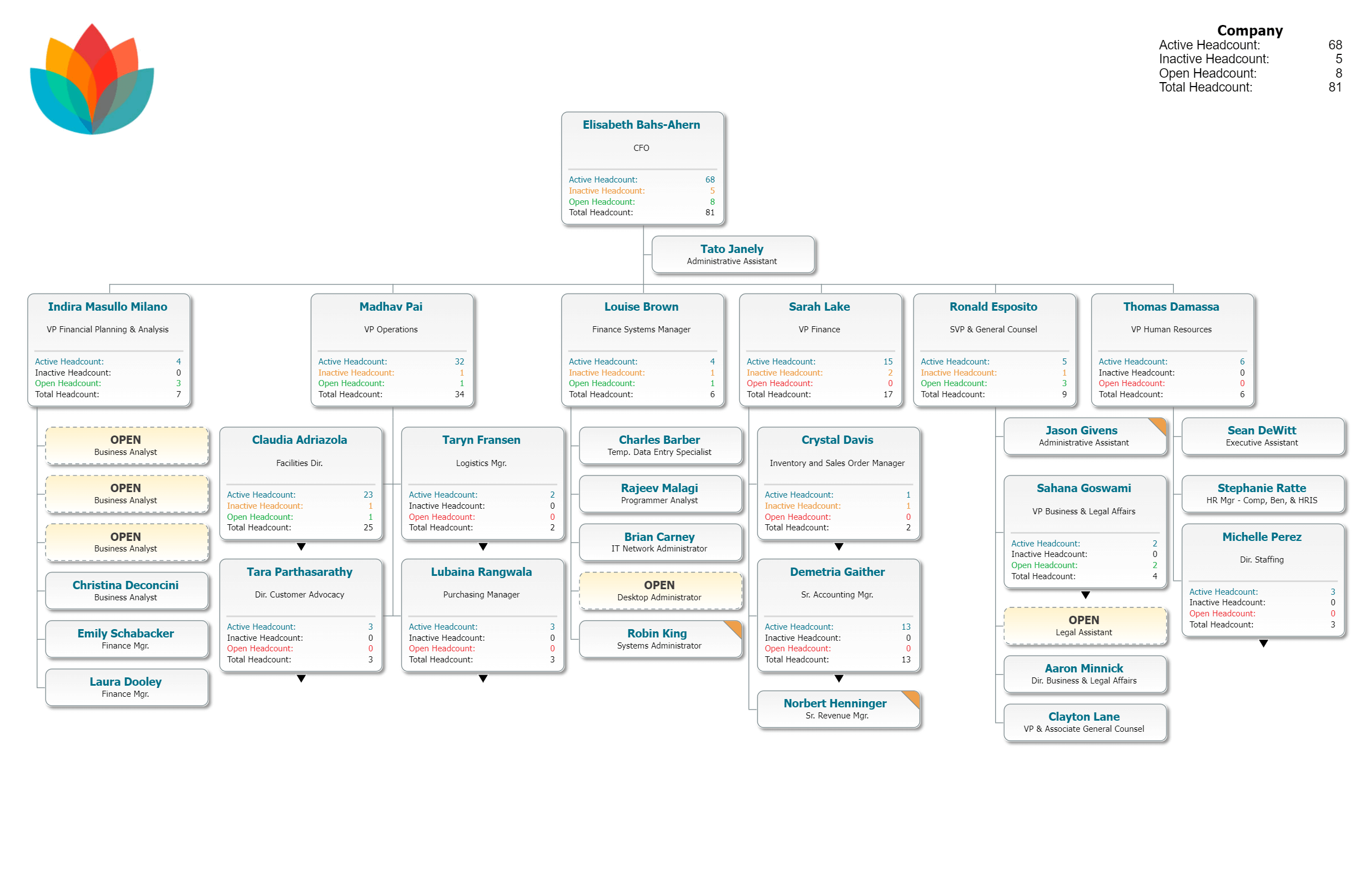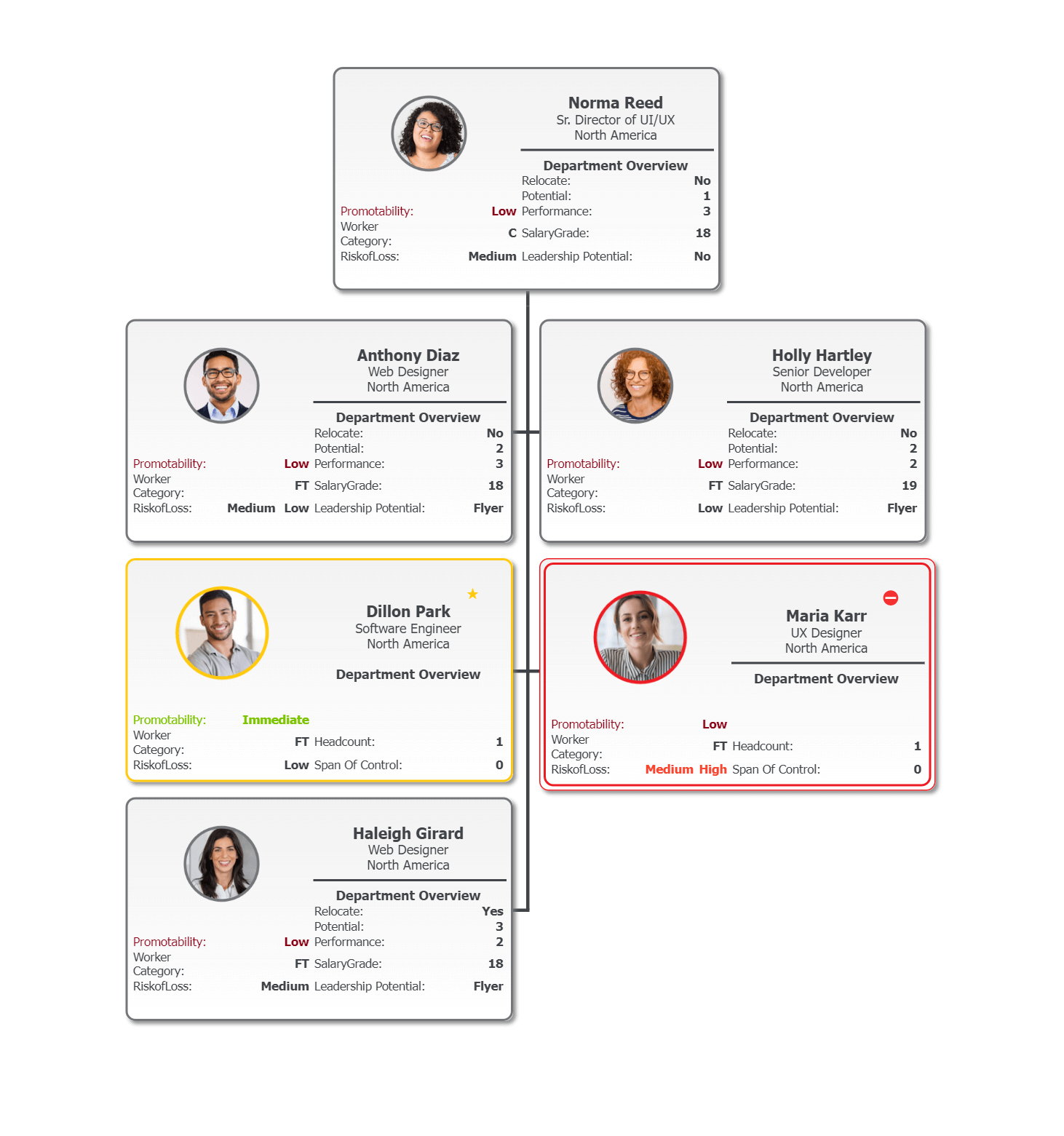November 6, 2019
11:53 AM
By OrgChart Team

You can gauge any company’s culture by looking at its employee retention rate. Yet a “healthy” turnover rate varies significantly across industries and even one company’s diverse departments, like the cost of turnover.
The chances of an employee remaining with a company decreases significantly over time. A recent analysis of 32 million LinkedIn profiles revealed a startling statistic: There’s only a 76 percent chance of an employee still being at a company 12 months after starting, a 59 percent likelihood after two years, and a 48 percent chance after three years.
This highlights the importance of employee retention metrics as crucial for HR departments.
Another intriguing finding shows that employees transitioning roles internally — laterally or through promotion — are more likely to stay within their current company. Tracking such internal mobility trends can be instrumental in understanding how to stimulate employee growth and improve retention.

An integral component of any organization’s human resource strategy should be understanding and managing the turnover ratio, particularly focusing on boosting the retention rate. An efficient approach isn’t about reaching an arbitrary number but interpreting turnover as a reflection of workplace culture, leadership effectiveness, and other essential aspects. Let’s explore.
Over the last decade, overall turnover in the US has consistently increased: the total separations rate in 2018 was 44.3 percent — up a whole percentage point from 2017. With the cost of backfilling roles estimated at 20 percent of that position’s salary and 40 percent of total separations occurring within an employee’s first year, it’s no surprise that business leaders are eager to curb turnover by any means necessary.
While turnover is an organic part of running any business, it can be potentially damaging. There’s no way to completely prevent any employee’s separation, but savvy leaders and HR teams know that mitigating unnecessary departures requires a close, innovation-minded look at overall workplace culture. The new wave of employee retention is all about diversity, happiness, flexibility, and benefits — but you need to know where you stand to know what you need here.
Essential HR metrics form the core of understanding your organization’s health and effectiveness. Some tools can assist HR professionals in tracking essential metrics like employee turnover ratio, manager effectiveness, and internal mobility trends.
This type of data tracking can provide insights into different departments and managers, offering a comparative view of overall organizational health.
Make the process of reducing unwanted turnover and improving employee retention actionable through some practical strategies:


In an era where data-driven insights drive strategic business decisions, HR professionals leverage these insights to ensure organizational health. This requires an accurate understanding of the organization’s current state and a clear vision for its future.
OrgChart, a comprehensive tool for HR professionals, combines all your people data in one place, allowing you to track the metrics you care about most and quickly spot gaps. OrgChart’s customizable charts ensure you have the information you need when you need it, allowing for efficient and effective workforce planning.
This revolutionary tool helps you visualize your organization’s current and future states, allowing you to align your organizational structure with strategic goals and prepare for significant people-related changes. Furthermore, with OrgChart, you can automate workforce planning, optimize workforce visibility, and ensure utmost data security while enabling customization to suit your organization’s unique needs.

Beyond a visual representation of your organization, OrgChart offers insights enabling you to drive business conversations across various topics. It allows you to create custom formulas to track key metrics and develop data-driven presentations highlighting trends and gaps. With OrgChart, you can also automatically archive the current state of your organization and revisit it at any point, ensuring that historical data is never lost.
Harness the power of OrgChart and unlock the potential of your organization. OrgChart equips you with the insights and tools to retain top talent, reduce turnover, and foster a positive workplace culture by elevating your workforce planning to new heights.
Take the first step toward revolutionizing your HR strategies. Request a quote today and experience the transformative impact OrgChart can have on your organization.
Tags: